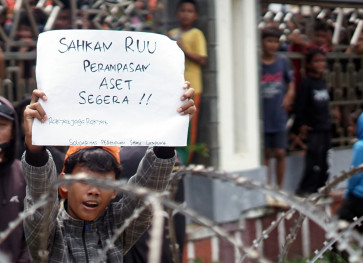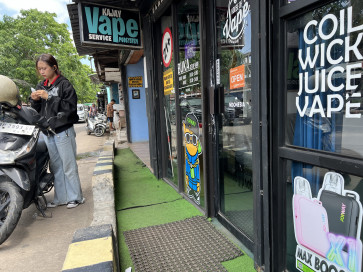Popular Reads
Top Results
Can't find what you're looking for?
View all search resultsPopular Reads
Top Results
Can't find what you're looking for?
View all search resultsWhen LPG blasts ruin futures
A main factor behind the success of the government’s kerosene-to-gas-conversion program in 2007 was that citizens were given no alternative but to follow the policy
Change text size
Gift Premium Articles
to Anyone
A
main factor behind the success of the government’s kerosene-to-gas-conversion program in 2007 was that citizens were given no alternative but to follow the policy.
Many of those people have now become victims of the government’s failure to oversee the implementation of regulations designed to ensure their safety in using subsidized 3-kilogram Liquid Petroleum Gas (LPG) canisters.
Those victims will bear their wounds for the rest of their lives, and their futures may suffer as a result.
Zaenuddin, 20, and his uncle Kasran, a 40-year-old porridge vendor, are among those who are now scarred for life. They were injured when an LPG canister exploded in their densely populated settlement in Tanjung Duren area, West Jakarta, along with eight other people, most of them porridge vendors.
A newly employed storehouse guard for a private company in North Jakarta, Zaenuddin, shared his story while laying on a bed at Sumber Waras Hospital in West Jakarta.
Zaenuddin’s body is 30 percent covered in burns and he is now afraid that he will lose his job.
“It is difficult to find a job now, I don’t want to loose this one because of my appearance,” he said, adding that he hoped the company would allow him to continue to work for them even though he had been absent for many days.
Zaenuddin spent a night at his uncle’s house on Jl. Tanjung Duren, when the tragic moment arrived on July 25.
“I decided to stay with my uncle, I wanted to share the good news about my job,” he said.
But the good news was short-lived as hours later Zaenuddin was in a dire state, with severe burns on his face, hands and legs.
“I haven’t recovered from the trauma, there’s something about the gas canisters that scare me off,” he said.
Zaenuddin was asleep when Kasran began preparing porridge at 3 a.m. Kasran removed the seal on a 3-kilogram gas canister, only for freezing-cold gas to start spraying out at tremendous velocity.
One of Kasran’s neighbors was cooking food on an open flame not far away. The spewing gas was ignited, producing an explosion and a fire that injured 10 people in the vicinity.
“I thought I was going to die,” Zaenuddin said.
He managed to run out of Kasran’s house and help his uncle escape from the fire.
Lying next to Zaenuddin at the hospital was Kasran, now barely able to speak due to the severeness of the burns on his face.
“He can barely breath. It is painful for him to talk,” said his sister in law, Maesaroh.
Maesaroh, 40, said the father of two had been the family’s breadwinner.
“His wife suffered a heart disease, we tried not to tell her about Kasran’s terrible condition,” she said.
With Kasran now hospitalized, no one is taking care of his family.
“I really hope our President can help the family,” she said.
Of the 10 victims, only two had been discharged from hospital. State oil and gas company Pertamina covered all of the victim’s medical costs.
Most suffered burns to about 30 percent of their bodies, but half of Kasran’s body was burned. Kasran must stay in hospital for another three weeks.
The Center for Public Interest Studies recorded that as of July 8, 2010, the number of gas explosion victims had reached 189 people, including dead and injured.










